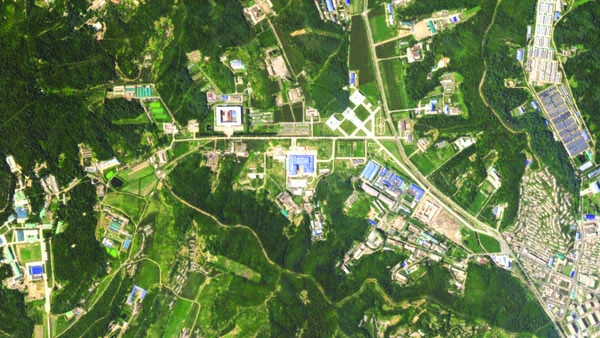
AFP, Seoul :
Activity has been detected at North Korea’s main nuclear site, suggesting Pyongyang may be reprocessing radioactive material into bomb fuel since the collapse of a summit with Washington, a US monitor said Wednesday.
The possible signs of fresh reprocessing activity last week come after a February summit between US President Donald Trump and North Korean leader Kim Jong Un ended abruptly without agreement on Pyongyang’s nuclear programme.
Since then North Korea has said it was mulling options for its diplomacy with the US and Kim said last week he was open to talks with Trump only if Washington came with the “proper attitude”.
The Center for Strategic and International Studies said satellite imagery of the Yongbyon nuclear site on April 12 showed five railcars near its uranium enrichment facility and radiochemistry laboratory.
“In the past these specialized railcars appear to have been associated with the movement of radioactive material or reprocessing campaigns,” the Washington-based monitor said.
“The current activity, along with their configurations, does not rule out their possible involvement in such activity, either before or after a reprocessing campaign.”
Trump and Kim held their first landmark summit in Singapore last June, where the North Korean leader signed a vaguely-worded deal on the “denuclearisation of the Korean peninsula”.
But their failure to reach agreement at their second summit in Hanoi on walking back Pyongyang’s nuclear programme in exchange for relaxation of sanctions has raised questions over the future of the wider process.
The US president walked away from a partial deal proposed by Kim, which included an offer to dismantle the Yongbyon complex.
About 100 kilometres (60 miles) north of Pyongyang, Yongbyon is home to the country’s first nuclear reactor, and is the only known source of plutonium for the North’s weapons programme.
Yongbyon is not believed to be the North’s only uranium enrichment facility and closing it down would not in and of itself signal an end to the country’s atomic programme.
North Korea suspended nuclear and missile testing during the diplomatic process in 2018 but the International Atomic Energy Agency has said there were indications that Yongbyon has been in use as recently as the end of February.
US Secretary of State Mike Pompeo told the US Senate Foreign Relations Committee last week that North Korea was continuing to produce fuel for nuclear bombs despite its pledge to denuclearize. But he insisted the Trump administration was still making progress in its talks with Pyongyang.
Joel Wit, a former State Department negotiator and founder of 38 North, a North Korea monitoring project, said it was unrealistic to expect North Korea to stop its programs “until the ink is dry on an agreement.”
That was the case with US negotiations with the Soviet Union during the Cold War, and more recently with Iran, “which continued to build more centrifuges capable of producing nuclear material even as it negotiated with the United States to limit those capabilities,” Wit said.
The Sanumdong factory produced two Hwasong-15 ICBMs, North Korea’s longest-range missiles, but the US official noted that Pyongyang still had not tested a reliable re-entry vehicle capable of surviving a high-velocity trip through the Earth’s atmosphere and delivering a nuclear warhead.
It is possible, the official said, that any new missiles the North is building may be for further testing of such vehicles and of more accurate guidance systems.
“They seem to have figured out the engines, but not all the higher-tech stuff, and that might be what this is about,” the official said.
“What’s more, a liquid-fueled ICBM doesn’t pose nearly the threat that a solid-fueled one would because they take so long to fuel, and that’s something we almost certainly could see in time to abort a launch, given our assets in the vicinity.”

